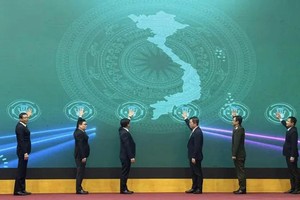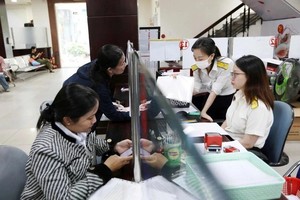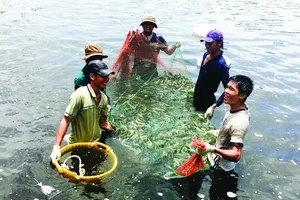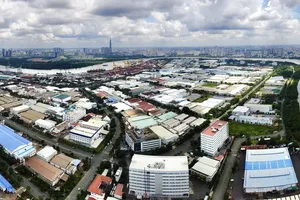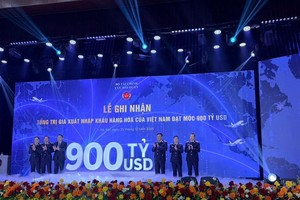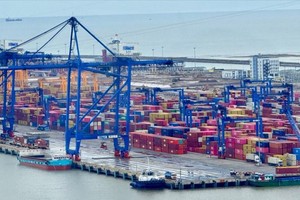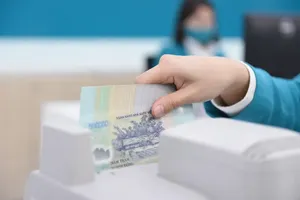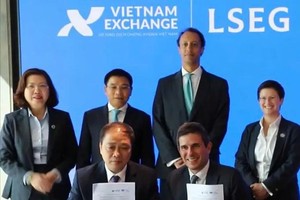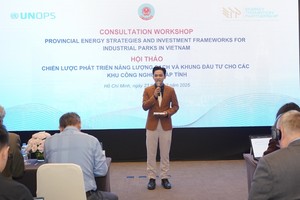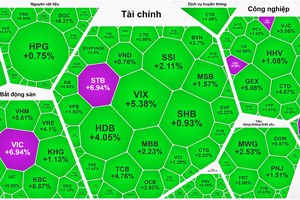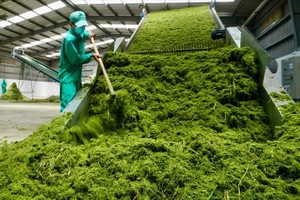 |
At Cai Mep-Thi Vai seaport in the southern coastal province of Ba Ria – Vung Tau (Photo: SGGP) |
However, experts are concerned about the exploitation of the seaports to promote investment efficiency.
Two main groups of seaports and three special seaports
According to the Vietnam Maritime Administration, Vietnam's seaport system currently has 286 wharves with a total length of more than 96 kilometers and a total cargo volume of over 706 million tons of goods, distributed in five groups. Of these, two large seaport complexes, Hai Phong and HCMC appeared in the ranking of 50 largest container ports in the world.
Deputy Minister of the Transport Nguyen Xuan Sang said that according to the National Seaport System Development Master Plan, Vietnam has two special seaport complexes, including Lach Huyen in the northern coastal city of Hai Phong and Cai Mep-Thi Vai in the southern coastal province of Ba Ria – Vung Tau.
Lach Huyen will be developed into the biggest deep-water port in the North with a total area of 57 hectares and a main wharf with a total length of 750 meters. The port will enable direct exports from Northern Vietnam to the US and European markets.
The port will be designed to handle an estimated capacity of 40-50 million tons of goods per year in 2020-2025, receive large vessels with a weight of 50,000- 100,000 tons, 6,000-8,000 TEU ships; and upgraded to serve 100,000-ton vessels and 8,000-TEU-capacity ships since 2030.
Cai Mep-Thi Vai will be built into an international transshipment port. The seaport is one of 23 ports that can receive ships up to 250,000 tons and named among the top 50 largest container ports in the world, pays taxes of more than VND20,000 billion on imported and exported goods to the central budget.
Cai Mep-Thi Vai port currently handles more than 16 percent of the total volume of cargo through seaports in the country and 50 percent of the total shipping volume of shipping containers in the southern region.
According to the plan, the Transport Ministry plans to issue appropriate mechanisms to develop the Van Phong International Transhipment Port in the central coastal province of Khanh Hoa, Tran De seport in the Mekong Delta province of Soc Trang.
Under the plan, Tran De Seaport has a total area of around 550 hectares, and a 16-kilometer sea-crossing bridge. It can accommodate multi-purpose ships, 100,000 DWT container ships, and 160,000 DWT bulk carriers.
In addition, Can Gio International Container Terminal is located on Phu Loi Isle in Thanh An Commune of Can Gio District in HCMC, near the buffer zones with an area of 93 hectares of the Can Gio Biosphere Reserve, and surrounded by Thi Vai and Theu rivers. However, the project will not penetrate the boundary of the biosphere.
Taking advantage of Can Gio located in the Cai Mep-Thi Vai marine fairway with bustling water transportation activities, the seaport covering an area of 570 hectares would be capable of receiving container ships of up to 250,000 DWT or 24,000 TEUs. The project built at a total investment capital of US$5.4 billion is divided into seven phases and is expected to be finished in 2045. The first phase will be complete in 2027.
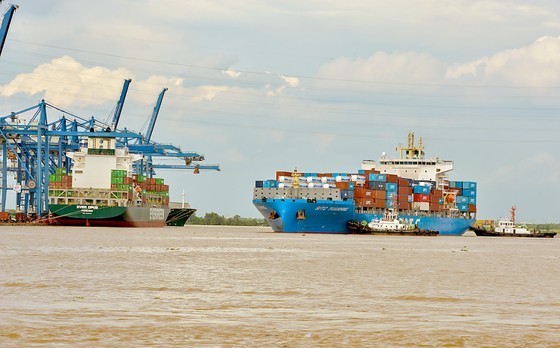 |
At Tan Cang - Cat Lai Port in HCMC (Photo: SGGP) |
Solving investment problems effectively
According to the Vietnam Maritime Administration, the seaport system is expected to handle 1,140- 1,423 million tons of goods, including 38-47 million TEUs of shipping containers, and receive 10.1 – 10.3 million passengers by 2030. The total investment needed for the construction project is about VND313 trillion (US$13.7 billion).
Currently, many seaport projects have attracted domestic and foreign investors. However, experts are concerned about the exploitation of the seaports to promote investment efficiency.
Vice Chairman of the Vietnam Seaport Association Tran Khanh Hoang said that the development of high-quality seaport infrastructure and effective exploitation of the seaport system are prerequisites for building a marine economic development strategy.
According to experts, Vietnamese seaports are facing a lack of infrastructure to attract leading shipping lines, such as Connection between ports, ship-to-ship cargo transfer, a specialized inspection organization, logistics ecosystem, interregional transportation network, high logistic cost, long duration for customs clearance, heavy traffic congestion on the roads around the port.
Minister of Transport Nguyen Van Thang has asked the Vietnam Maritime Administration to urgently solve these problems and build a plan on allocating medium-term investment capital for transport infrastructure projects to connect large seaports in the 2026-2030 period.
